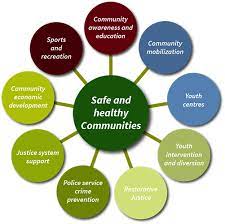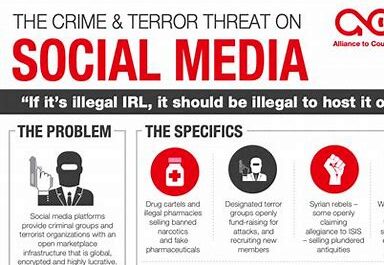Introduction:
Crime is a pervasive issue in society, causing harm to individuals, communities, and economies. Traditional responses to crime often focus on punishment, but increasingly, there is recognition of the importance of prevention and rehabilitation. Crime prevention programs aim to intervene before criminal behavior occurs, while rehabilitation efforts seek to address the root causes of criminality and reintegrate offenders into society. This essay explores various crime prevention strategies and rehabilitation programs, their effectiveness, challenges, and potential synergies.
Crime Prevention Programs:
Community Policing
Community policing emphasizes collaboration between law enforcement agencies and communities to address crime. It involves building trust, promoting problem-solving, and empowering communities to take ownership of safety. Effective community policing can reduce crime rates by fostering cooperation and addressing underlying issues like poverty and social inequality.
Early Intervention Programs

Early intervention programs target at-risk individuals, such as troubled youth or individuals with substance abuse issues, before they engage in criminal behavior. These programs provide support, counseling, and education to address risk factors and steer individuals away from criminal activities.
Crime Hotspot Policing
Hotspot policing concentrates law enforcement resources on areas with high crime rates. By targeting specific locations, such as known drug markets or areas with frequent incidents of violence, law enforcement can disrupt criminal activities and deter offenders.
Crime Prevention Through Environmental Design (CPTED):
CPTED focuses on designing the built environment to deter crime. Strategies include improving lighting, removing hiding spots, and increasing surveillance to create safer spaces that are less conducive to criminal behavior.
Youth Development Programs
Investing in youth development programs, such as after-school activities, mentorship programs, and job training initiatives, can provide young people with positive alternatives to crime and help them develop essential skills and resilience.
Criminal Rehabilitation Programs:
Educational Programs

Providing educational opportunities, including literacy programs, vocational training, and access to higher Substance abuse is a common underlying factor in criminal behavior. Rehabilitation programs that offer comprehensive treatment for substance abuse disorders, including counseling, detoxification, and support groups, can reduce recidivism rates among substance-involved offenders.
Cognitive Behavioral Therapy (CBT)
CBT aims to change patterns of thinking and behavior that contribute to criminal conduct. By addressing issues such as impulsivity, anger management, and distorted thinking, CBT helps offenders develop prosocial skills and make better choices.
Restorative Justice Programs
Restorative justice approaches emphasize repairing the harm caused by crime and promoting healing for victims, offenders, and communities. These programs may involve mediation, restitution, and community service, allowing offenders to take responsibility for their actions and make amends.
Effectiveness and challengness
While crime prevention programs and criminal rehabilitation efforts have shown promise in reducing recidivism and improving public safety, they also face significant challenges and limitations. Effectiveness can vary depending on factors such as program design, implementation quality, and resource availability. Additionally, measuring the long-term impact of these interventions can be challenging, as recidivism rates alone may not capture the full extent of their success.
Reentry Programs

Reentry programs assist offenders in transitioning back into society after serving their sentences. These programs may provide housing assistance, job placement services, and support with accessing healthcare and social services to facilitate a successful reintegration process.
Effectiveness and Challenges: While crime prevention and rehabilitation programs offer promising strategies for addressing crime, their effectiveness can vary depending on factors such as program design, implementation fidelity, and local context. Challenges to effective implementation include resource constraints, coordination between agencies, and resistance to innovation within criminal justice systems. Additionally, measuring the long-term impact of these programs can be challenging, as outcomes may take years to manifest fully.
Synergies and Future Directions
:There is growing recognition of the interconnectedness between crime prevention and rehabilitation efforts. Integrated approaches that combine elements of both prevention and rehabilitation offer the potential for greater impact and sustainability. For example, early intervention programs can not only prevent at-risk individuals from becoming involved in crime but also provide pathways to rehabilitation for those already involved. Similarly, reentry programs that address the underlying factors contributing to recidivism can help break the cycle of crime and incarceration.
Reentry Support Services

Successful reintegration into society requires ongoing support and assistance for offenders transitioning from incarceration to the community. Reentry support services may include housing assistance, employment placement, mental health counseling, and mentoring programs to help offenders navigate the challenges of life outside prison and avoid relapsing into criminal behavior.
Crime prevention programs aim to stop criminal activities before they occur by addressing the underlying causes and risk factors associated with crime. These programs encompass a range of interventions, including:
Community Policing
Community policing initiatives involve law enforcement agencies working closely with local communities to identify and address crime issues collaboratively. By fostering trust and cooperation between police officers and community members, these programs enhance crime reporting, facilitate early intervention, and promote community engagement in crime prevention efforts.
Youth Outreach and Education
Targeted outreach and educational programs for at-risk youth play a crucial role in preventing juvenile delinquency and gang involvement. These initiatives provide young people with alternatives to crime by offering mentorship, academic support, recreational activities, and life skills training. By addressing risk factors such as poverty, lack of parental supervision, and limited access to education, these programs empower youth to make positive choices and avoid criminal behavior.
Crime Hotspot Analysis and Predictive Policing

Utilizing advanced data analytics and technology, law enforcement agencies can identify crime hotspots and deploy resources strategically to deter criminal activity. Predictive policing algorithms analyze historical crime data to forecast where and when crimes are likely to occur, allowing law enforcement to allocate resources proactively and prevent offenses before they happen.
Environmental Design and Crime Prevention Through Environmental Design (CPTED):
CPTED principles focus on designing and managing the built environment to reduce opportunities for crime. Strategies such as improving lighting, enhancing natural surveillance, and controlling access to property can deter criminal behavior and create safer neighborhoods. By enhancing the perceived risk of detection and increasing guardianship within communities, CPTED contributes to crime prevention efforts.
Criminal Rehabilitation While crime prevention programs aim to stop crime from occurring, criminal rehabilitation initiatives focus on reintegrating offenders into society and reducing recidivism rates. These programs recognize that many individuals involved in criminal activities have underlying issues such as substance abuse, mental health disorders, or lack of education and employment opportunities.
Conclusion
Crime prevention and rehabilitation are essential components of a comprehensive approach to addressing crime. By investing in evidence-based programs that target both the root causes of criminal behavior and the needs of offenders, society can reduce crime rates, promote public safety, and support the successful reintegration of offenders into communities. While challenges exist, continued innovation, collaboration, and investment in these efforts offer the promise of safer, more resilient communities for all.




